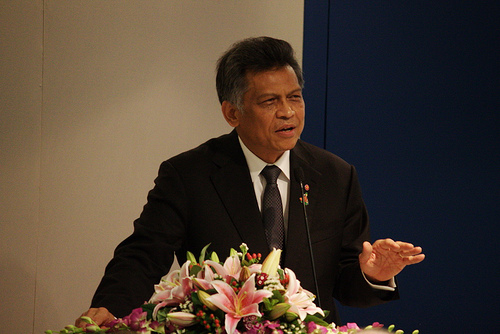ASEAN may have a rather loose core but draws on connectivity and dialogue to generate real partnership. ‘Everybody is comfortable with us’, Surin points out. For this reason, ASEAN can claim that it gave rise to other configurations too: APEC, ASEM, ARF and the ASEAN+3. And it will be just as critical to what comes next.
As the US seeks to re-engage with East Asia, it would be wise to do so with respect for the things that ASEAN, and the East Asian region more broadly has to do to consolidate its core, through closer economic integration and regional institution-building. This is the core of Hatoyama’s East Asian Community idea, he might have said. The US does not need to be all over everything, but rather, positioned ‘like a ceremonial umbrella, which is not held straight overhead, the US has to be symbolically behind, not overwhelming, not imposing, but there to provide a sense of security, trust and confidence to the region’. That is where, it could be added, Rudd’s Asia Pacific Community idea complements Hatoyama’s East Asian Community idea as America seeks to relate more closely to East Asia and ASEAN within East Asia. As I suggested last week, America does not have to be a member of EAS (ASEAN + 6) to achieve these mutual objectives, but it does have to be integrally related to it, in dialogues that are convenient to both sides and focused on the big new mutual strategic economic and political interests and issues (see Emmerson and Feigenbaum). ASEAN cannot presume centrality; it needs to continue to earn it as it has in the past.
As Surin says, ASEAN itself has to change. It needs to consolidate and integrate into one market and production base more effectively. It also needs to deal with its own constitutional issues. The next issue of EAFQ takes a detailed look at Questions for Southeast Asia, including trying to get the problems in Thailand into some perspective. As issue editor Nicholas Farrelly concludes, the Association of Southeast Asian Nations has become one of the world’s premier regional bodies. Can it continue to lead the region? Will it be resourced to tackle pressing issues that challenge its coherence? These are important questions not only for Southeast Asia but for the East Asian and Asia Pacific regions as a whole.

